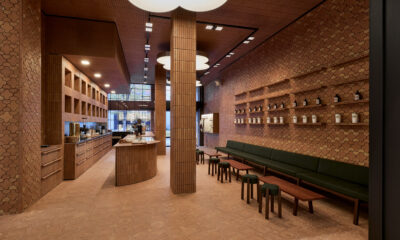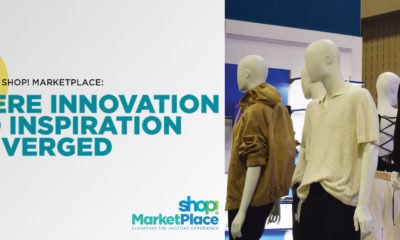“Experiental retail” is a catch-phrase heard repeatedly since retailers discovered that consumers need to be entertained and engaged in store environments. At its best, “experiential” or “entertainment” retail can engage customers, give them a memorable retail experience, educate them and convince them to buy. At its worst, it can lead to store designs with a lot of bells and whistles that cost a lot of money, don't have meaning and don't work.
Now is the time for well-thought-out design elements, such as light, sound and interactivity that enhance consumers'shopping experiences without intimidating them or detracting from the purpose of entering a store: to buy.
But striking the right balance requires some considerations. For instance, who is the target consumer? Different generations can handle different degrees of technology, says Mauro Pasinelli, creative designer at Synsor Corp. (Everett, Wash.), a company that develops both the software and cabinetry for interactive kiosks. “If it's a Y-generation installation,” Pasinelli notes, “you can really go wild and push the limits of technology because you know it's going to be received very well. With Baby Boomers, you have to make them absorbed in a way that's more subtle and not intimidating.”
Phil Lenger, executive producer of Show and Tell Productions, a New York-based multimedia consultancy group, concurs. “I'm not a proponent of interactivity for the sake of interactivity,” notes Lenger, whose company is coordinating the audio/visual components for the new Toys 'R'Us store opening this month in Times Square. “Shoppers have enough distractions; they don't need another one.” He notes that interactive elements should engage customers by creating a theatrical backdrop to the primary objective, which is buying the merchandise. “You want to enhance the retail experience and give customers something to remember, but without slowing them down.”
At their best, interactive elements are used to aid product selection and boost sales. At the new Jo Malone flagship in New York's SoHo district, designers incorporated a fragrance tester that allows customers to mix and match scents using a computer, then take a whiff. According to Anne Kocher, vp of sales at Aerome Scent Technology, a New York-based manufacturer of fragrance technologies, the retailer wanted a system similar to one in its London flagship where customers could test different fragrances without putting them on their skin.
How it works: A visual presentation runs on a 42-inch flat-screen TV. Customers can touch the screen and select different scents. Then two air nozzles below the screen pump out a cloud of the aroma. Because there's no alcohol – it's a dry sampling system – the scent dissipates quickly, clearing the air for the next customer.
Advertisement
Whether big or small, retailers are finding innovative ways to implement technology that makes good sense (as well as scents).

 Headlines1 week ago
Headlines1 week ago
 John Ryan2 weeks ago
John Ryan2 weeks ago
 Headlines7 days ago
Headlines7 days ago
 Headlines2 weeks ago
Headlines2 weeks ago
 Headlines1 week ago
Headlines1 week ago
 Retail Buzz3 days ago
Retail Buzz3 days ago
 Headlines1 week ago
Headlines1 week ago
 Headlines1 week ago
Headlines1 week ago















